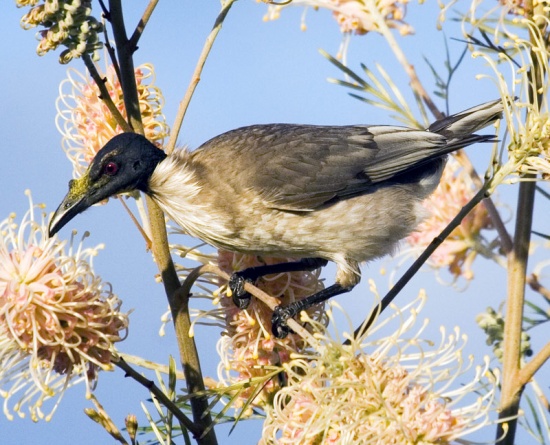| Line 1: | Line 1: | ||
| − | |||
[[Image:Noisy_Friarbird.jpg|thumb|550px|right|Photo by ChrisCharles <br/>Photo taken: Queensland, Australia]] | [[Image:Noisy_Friarbird.jpg|thumb|550px|right|Photo by ChrisCharles <br/>Photo taken: Queensland, Australia]] | ||
;[[:Category:Philemon|Philemon]] corniculatus | ;[[:Category:Philemon|Philemon]] corniculatus | ||
| Line 25: | Line 24: | ||
==External Links== | ==External Links== | ||
{{GSearch|Philemon+corniculatus}} | {{GSearch|Philemon+corniculatus}} | ||
| − | + | ||
[[Category:Birds]] [[Category:Philemon]] | [[Category:Birds]] [[Category:Philemon]] | ||
Revision as of 21:49, 12 February 2017
- Philemon corniculatus
Identification
Naked black head and a strong bill with a prominent casque at the base. Upperparts are dark brown to grey, the underbody is off-white, with silver-white feathers around the throat and upper breast, white tipped tail.
Distribution
Australia and New Guinea.
Taxonomy
First described in 1790 by Ornothologist John Latham. The closest species to this is the Silver crowned Friarbird.
Habitat
Dry forests and eucalypt woodlands, coastal scrub, heathlands and around wetlands and wet forests.
Behaviour
Diet includes nectar, fruit, insects and other invertebrates and sometimes eggs or baby birds.
The female builds the large, deep cup-shaped nest from bark and grass, bound with spider webs, slinging it in a tree-fork. She alone incubates the eggs, but both parents feed the young, up to three weeks after fledging.




